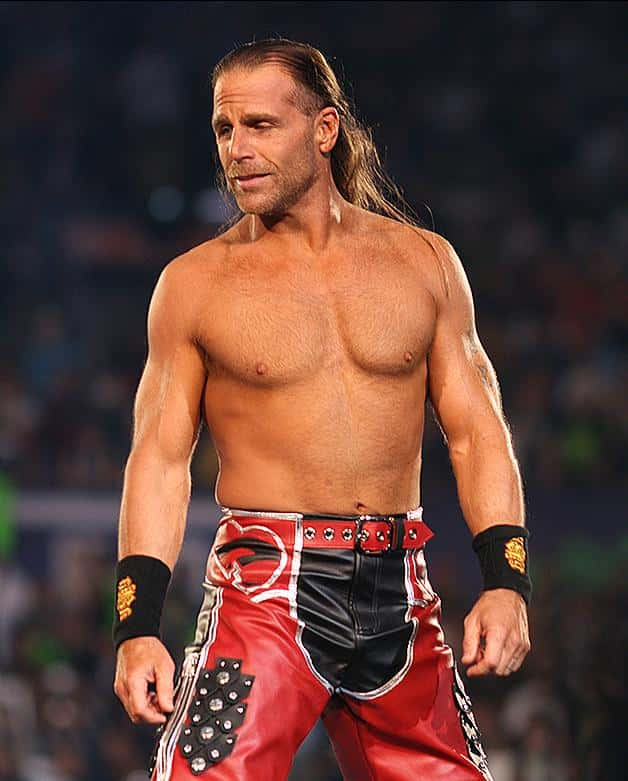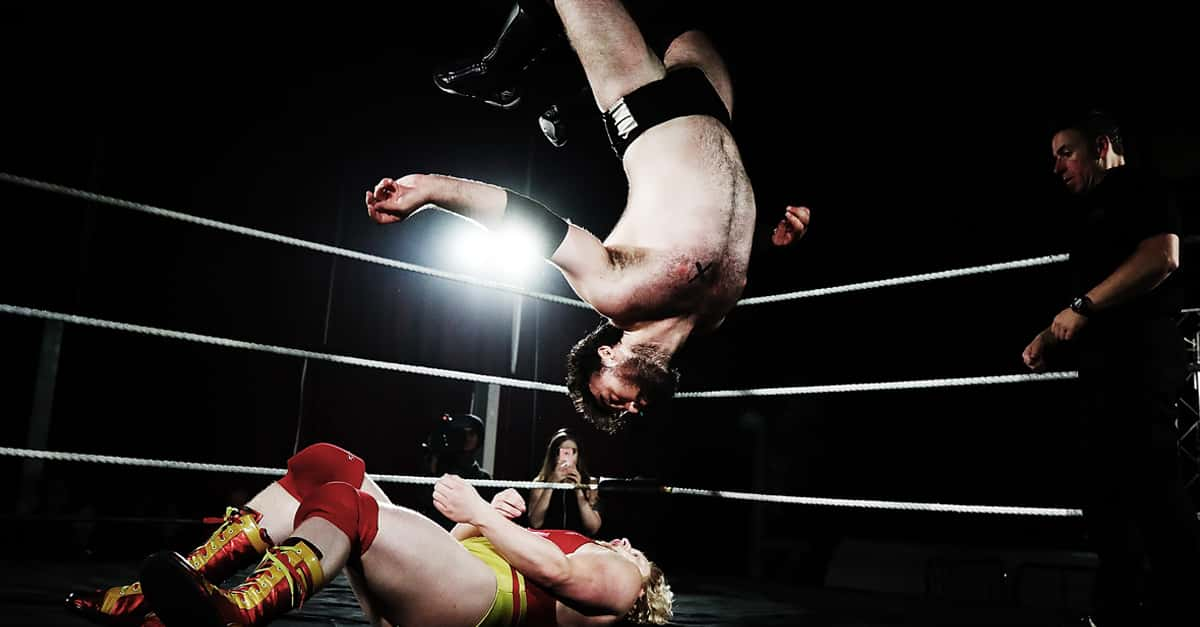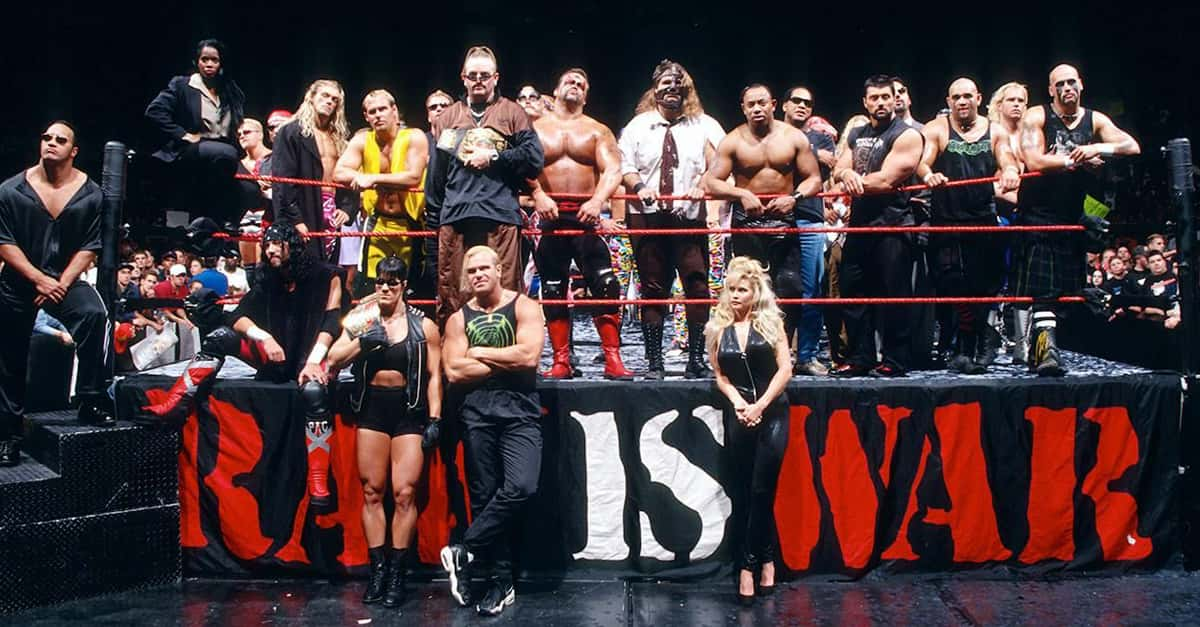"Vince McMahon didn't screw Bret Hart. I truly believe that Bret Hart... screwed Bret Hart."—Vince McMahon.
For many people who have never been fans of professional wrestling, it might be hard to see why people enjoy it. It’s a tough world to break into—one of cartoonish violence, heightened reality, frankly ridiculous personas, and melodramatic plot twists. It attracts derision from all sides. The arguments that are thrown around are familiar—“It’s fake” (yes, but it still takes talent and athletic ability), “It’s a soap opera for men” (and for women too—and what’s wrong with that?), and the simple “It’s trash”—with the unspoken insinuation that anyone who likes it must be trash too.
But in 1997, the culmination of a failed contract negotiation with one of wrestling’s biggest stars led to a bizarre series of events that came to be known as the “Montreal Incident.” The event changed the careers of all involved and led to a second golden age of professional wrestling. It also broke the fourth wall for one of the first times in the history of the World Wrestling Federation (WWF—which later became the WWE, World Wrestling Entertainment), leading to the creation of a sort of strange meta-narrative that suddenly made the behind-the-scenes inner workings of the WWF part of its onscreen action. And all that long before it became trendy for films and TV shows to do the same (think Adaptation or Community). How’s that for trash?
 Getty Images Seth Rollins
Getty Images Seth Rollins
What happened that day in 1997 actually began in 1983, when Vince McMahon purchased the parent company of the WWF from his father, Vincent J. McMahon. He spent the ‘80s expanding the organization from its local arena origins and aggressively marketing the WWF as a nationwide TV-centric brand. During this time, he established a lineup of superstars like Hulk Hogan, “Macho Man” Randy Savage, and the Ultimate Warrior. This era established a classical format for pro wrestling that attracted thousands of fans and built the framework of programming they came to expect from the WWF.
The most sacred idea around pro wrestling in that era was “kayfabe”—the illusion that what we see on our screens or as an audience member in an arena is real. It was important to keep up this illusion—otherwise, what were the stakes? What was the point of it all?
Toward the end of the Golden Age of the WWF, a wrestler by the name of Bret “the Hitman” Hart was making his ascent through the ranks. He came from a dynasty—his father Stu was a wrestler and trainer who had founded Stampede Wrestling, a Canadian wrestling promotion based in Calgary, Alberta. Bret grew up training with his father in their basement, which had been converted to the “Dungeon,” a gym and wrestling school. Essentially, Hart’s whole life had been built around wrestling—he never knew anything but to take it completely seriously. This outlook would be one of the deciding factors in what happened to him later in life.
 Getty Images Bret "The Hitman" Hart
Getty Images Bret "The Hitman" Hart
Although Bret Hart had been with the WWF since 1984, he finally found success during what is known as the New Generation Era. In the early ‘90s, the popularity of the WWF was down thanks to an ongoing steroid scandal which had caught Vince McMahon as well as many of the established stars in its web. The WWF began promoting younger wrestlers at this time, hence the “New Generation” moniker. From 1992 to 1996, Hart was regularly the WWF champion.
In the New Generation Era, another young star by the name of Shawn Michaels had risen through the ranks. Whereas Hart was serious, Michaels was flippant; whereas Hart was wholesome, Michaels was arrogant and occasionally vulgar; whereas Hart’s view of wrestling was built up from the unspoken rules learned from an entire life spent in the ring, Michael’s was that of a power-hungry (relative) newcomer eager to break rules if it meant skipping a rung on the ladder up. They were undeniably two of the greatest athletes to ever grace the ring, but personality-wise, they clashed. Hard.
Hart was at a crossroads in 1997. He had signed a 20-year contract with the WWF in 1996, which had quickly proved too expensive for the organization. For his part, Hart was eager to stay with the WWF, but he reluctantly entered negotiations with Ted Turner’s World Championship Wrestling (WCW). For Turner, getting Hart to sign a contract would surely be his ace in the hole in the competition for TV ratings. Hart signed a three-year contract. One problem? He was the WWF champion, and for the integrity of the title, couldn’t leave the organization with it.
Vince McMahon and Bret Hart spent the autumn of 1997 tensely negotiating how to hand off the championship. McMahon was eager to hand it off to the other big star at the time, Shawn Michaels, but Michaels’ terrible attitude ensured that Hart would never sign off on it—thanks to a clause that ensured creative control over his exit. The onscreen banter and rivalry between the two stars leading up to the match had only exacerbated the situation. McMahon had one choice: to orchestrate his desired outcome from behind-the-scenes, without Hart’s consent.
 Wikipedia Shawn Michaels
Wikipedia Shawn Michaels
The Survivor Series pay-per-view event took place on November 9, 1997, at the Molson Centre in Montreal, Quebec. The location was notable because Hart had been particularly against giving up his title to Michaels in Canada, and he’d recently been part of an ongoing “USA vs. Canada” storyline. McMahon had proposed a strategy to Hart: have the championship match between Hart and Michaels take place as planned, only to have it end in a disqualification when other wrestlers flooded the ring. Hart would then give up the championship at another US event before his contract ended. However, McMahon’s real plan was much different.
As the match progressed in front of a sold-out crowd at the Molson Centre, presided over by referee Earl Hebner, it was a chaotic scene. McMahon had filled the area surrounding the ring with officials, anticipating the anarchy that would follow what he was about to do. Things went according to the script, including a moment where Hebner was supposed to be knocked out by the wrestlers. The official plan was for Hebner to continue to feign being unconscious while Michaels applied a move known as the sharpshooter to Hart with no ref in the ring.
However, that’s when McMahon’s real plan came into play. Hebner suddenly jumped up and yelled for another official to ring the bell, signaling that Michaels’ submission hold was successful—that Michaels had won and was now champion. As Hart was stuck, twisted in Michaels’ sharpshooter, you can see the realization of what was happening move across his eyes—he grabs Michaels’ ankle and makes brief eye contact with McMahon. Michaels had to have plausible deniability in the whole affair, and so he acts dazed as McMahon foists the championship belt on him and they both run for the exit.
 Wikipedia Referee Earl Hebner
Wikipedia Referee Earl Hebner
Hart stalked the ring alone, throwing middle fingers—and a ball of spit—towards McMahon. As he traced out the letters “W” “C” “W” to the fans in the Montreal audience, they began to realize what had happened. They (and the other wrestlers watching backstage) were the only ones. The video feed of the pay-per-view had cut off moments after the bell had rung, four minutes ahead of schedule. The audience watching at home knew that they had a new champion, but also that something strange had surely happened. They'd have to wait until the next day to find out the truth.
Backstage, accusations—and punches—flew. Hebner, who had previously pledged allegiance to Hart, fled and was likely in a car peeling out of the arena before Hart could even leave the ring. Michaels denied any involvement to Hart’s face—a lie. McMahon locked himself in his office while another wrestler pounded on the door. Hart’s wife ripped into one of Michaels’ lackeys, as he denied involvement. Ultimately, Hart left the arena, but not before leaving McMahon with a black eye.
The next morning, they were due to film the regular Monday night program Raw in Ottawa. By so callously and obviously interfering, McMahon had torn down the fourth wall of kayfabe—the illusion that wrestling matches were not pre-determined. They had a problem to address: when the fourth wall is torn down, how do you build it back up? Do you build it back up? McMahon’s black eye was the physical evidence of what had happened the previous night. There was no covering it up.
 Getty Images Vince McMahon
Getty Images Vince McMahon
In the following days and weeks, McMahon began to appear less and less as a ringside commentator and more and more as “Mr. McMahon,” the callous, profit-driven, authoritarian puppet master behind all the WWF action—the one who had orchestrated the Montreal Incident. Suddenly, wrestlers could curry favor with fans by defying Mr. McMahon—after all, what’s more aspirational than telling off your boss?
What happens in Hollywood when a disaster happens behind-the-scenes? Directors are fired and replaced, actors are recast, characters are killed off by angry writers. But after the Montreal Incident, there was no way for the WWF to rewrite what had happened. And so, rather than sweeping what had happened in Montreal under the rug, it was embraced: referred to and re-enacted in the years following, becoming a shorthand which worked to easily establish two wrestlers as hero and villain. People crave authenticity, or at least, the illusion of it. By adopting a meta-narrative and breaking kayfabe, the WWF made its fans feel like insiders—a strategy that paid off for them in spades in the years following and changed pro wrestling forever.












